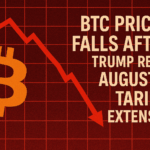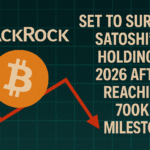This article will cover impermanent loss in yield farming, which describes liquidity providers suffering a temporary loss to their assets due to price changes of tokens paired for trading within DeFi platforms. Knowing this is important for anyone involved in DeFi so they can effectively mitigate risks and maximize profits.
What is Impermanent Loss?
In the world of decentralized finance (DeFi), impermanent loss describes the liquidity provider’s temporary loss in value. When the prices of assets in a liquidity pool increase or decrease in comparison to when they were deposited, the value of assets within the pool adjusts.
This can create a situation where the liquidity provider, upon withdrawal receives, assets that are worth less than just holding onto them would be. The term ‘impermanent’ is used in the context as the loss is temporary, if the asset prices return to their original state.
An investor’s losses become permanent only when they withdraw after price divergence. What needs to be understood is that even though there are losses on impermanent loss, the liquidity provider could still profit from the payment fees earned from the liquidity pool.
What is an Impermanent Loss in Yield Farming?
To put it simply, if you are a liquidity provider in a liquidity pool protocol and your cryptocurrency’s price increases or decreases in the real world, you experience an impermanent loss.
It’s called an impermanent loss because the price may return back to the starting position which may allow for reversal of the loss.
Indeed, that explanation is a bit too shallow. In order to grasp the concept of impermanent loss pertaining to yield farming, it is critical to comprehend how liquidity pools and Automated Market Makers (AMM) operate.

With a liquidity pool, you are only able to contribute with pairs of tokens (cryptocurrencies). The value of these tokens is based on their ratio and it is not affected by outside elements.
Let us take, for example, a scenario where you have an ETH-USDT pair that you add to a liquidity pool, and ETH prices increase by 10% in the external market. In this case, the value of ETH in the liquidity pool would remain constant. That scenario outlines what impermanent loss is.
Said differently, an impermanent loss, is the opportunity cost of not maintaining usUSD and Ether in the cryptocurrency wallet where it would have appreciated better (in value) than in the liquidity pool which usually pays the liquidity provider with a portion of the trades made in that market.
Sample case
Let us say you make an investment (contribution) on an asset pair: ETH and USDT, and imagine that ETH = $200, and USDT = $1 (which is the equivalent of 1 ETH = 200 USDT).
Given the fact that the ratio for the pair must be 50/50, you give 1 ETH and 200 USDT, which means your total contribution is $400. The pool has 10 ETH and 2000 USDT, bringing the total liquidity pool to $20,000 (20 times 2000), of which you own 10% of the shares.
Now, suppose for some reason the price of ETH in the real world changes from $200 to $400. In this scenario, the price for the liquidity pool remains unaffected by other variables, meaning that ETH is being sold for significantly less than its price in this liquidity pool. Although this would create an arbitrage, that discussion is for another day.
This may be where you experience impermanent loss. While this may seem confusing, this is a very simplified example. In reality, working this out can be extremely challenging. To illustrate…
How to calculate impermanent loss?
It’s not the easiest task in the world, so just to shield you from the pain of such harsh mathematics, here’s a calculator that can compute any loss resulting from yield farming.
Factors Influencing Impermanent Loss
Market Volatility Losses in the crypto world occur due to the extreme volatility that happens in liquidity pools. This means that pairs of assets within a pool experience divergence in price which case worsens the impermanent loss.
Asset Pair Correlation Liquidity pools that comprise of highly correlated assets or stablecoins tend to have low IL losses. This happens due to correlated assets having synchronized price changes which helps in decreasing the gap in divergence.
Liquidity Pool Composition The depth of a liquidity pool, the types of assets included and the design details affects permanent loss severity. A larger liquidity pool will be able to facilitate large volume trades without significant price changes. And liquidity pools containing highly co-relating assets lowers the risk of IL loss.
Time Horizon The length that an asset stays in a liquidity pool with respect to IL is important. It is better to keep assets longer in LP and wait till the price reverts to original expected value.
AMM (Automated Market Maker) Algorithms – How prices are changed within the pool depends on varying AMM models, including constant product and power law invariant models. The sensitivity of the pool with respect to price variation is determined by a specific algorithm, and thus impacts the degree of impermanent loss.
Fee Structure and Trading Volume – Earnings from fee paying transactions can cover the value of impermanent loss. High volumes of trade activity, along with positive fee payment arrangements, can greater than balance the losses so that liquidity provisioning becomes more attractive even with downside risk.
Do Yield Farming Rewards Offset Impermanent Loss?
Offsetting losses is the real question when it comes to yield farming, right? While your money is idle in a pool, the pool also earns rewards.
Can those rewards offset the losses earned through impermanent loss? The answer is more complicated than ‘yes’ or ‘no’ and differs from person to person. Let’s break it down:
Transaction Fees
When someone trades in the pool you are providing liquidity to, you are entitled to a share of the transaction fees. If you are in a popular pool, those fees can add up quite significantly. If they are large enough, they could help offset the impermanent loss.
Yield Farming Tokens
In addition to the native tokens, liquidity providers can also earn tokens from many other platforms. Some of these tokens have great yields which can end up being beneficial in the long run.
However, in the short term, it comes with its own risks like price volatility and being a potential rug pull. Still, the rewards can end up being more than enough to compensate for the impermanent loss.
Return On Investment:
Newer projects and those in their growth phases tend to offer high rewards and are able to stack incentives. However, these are usually for an insignificant amount of time.
At some point, if the price of the asset deviates too much, the rewards will not reach the level needed to make up for the impermanent loss.
How to Avoid Impermanent Loss in Yield Farming?
The world of Decentralized finance (DeFi) has its perks, but yield farming can be really tricky considering the highly volatile nature of cryptocurrencies.
Although it is nearly impossible to eliminate impermanent loss – which is a temporary decrease in value when you provide liquidity – there are a few methods that can help reduce its effects: .
Stablecoin Pairing
By pooling together stablecoins like USDC or USDT with volatile cryptocurrencies, the magnitude of price fluctuations can be decreased due to stablecoins having a consistent value.
Selecting Low Volatility Pairs
Research the asset pairs that have a track record of being more stable over time, as highly correlated assets that tend to move together usually don’t deviate much and help in reducing impermanent loss.
Investment Diversification
Instead of concentrating your funds into a single liquidity pool, distribute them to several pools. This approach helps you to control risks and reduce losses from a single source.
Monitoring Market Conditions
Avoid adding liquidity during overloaded bullish or bearish phases. Normally, drastic price changes in either direction are more likely to occur during these phases, which can lead to a larger case of impermanent loss.
Reducing Exposure
Try to restrict the amount of currency you contribute to liquidity pools to a single fraction.
Look Into Loss Prevention Options
Some DeFi protocols provide compensatory mechanisms for liquidity providers facing impermanent loss, like added tokens over time or coverage. Look into systems that offer these types of protections to aid your risk management efforts.
You must accept that yield farming is risky, and incurring some degree of impermanent loss is part of the learning curve. If you understand how to educate yourself, adopt these strategies, and stay alert, you’ll be able to deal with the complexities of DeFi and improve your standing over time.
Why is Impermanent Loss Important?
Yield farming can be particularly hurtful when impermanent loss is present, especially when:
- There is a notable change in the price of one of the tokens in the pair
- The volume of trading is low which results in fewer fees to cover the loss
- Liquidity is withdrawn before the price reverts back to the original level
In some scenarios, it is still profitable to compensate for an impermanent loss when the trading fees and rewards are highly profitable. However, during periods of extreme market volatility, the loss may be worse than the gain.
Conclusion
Providing liquidity to a certain asset pair comes with it’s own rewards and challenges. Primarily the uncertainties associated with the price volatility of the assets poses a threat to liquidity providers.
This is what is termed as the Impermanent Loss concept in the world of DeFi finance. The possibilities to earn from liquidity and pair trading coins to earn LP fees comes with the risk of impermanent loss which can greatly impact the liquidity provider.
There are several ways in which liquidity providers or traders can overcome strategical approaches like doing asset pair analysis, market condition evaluation and many others such as diversifying through several pools or pairing volatile assets to stablecoins helps in overcoming the hurdles of impermanant loss.
Having a deep understanding of “impermanent loss” enables participants to make better informed decisions while contemplating the potential rewards alongside any risks associated with yield farming.










